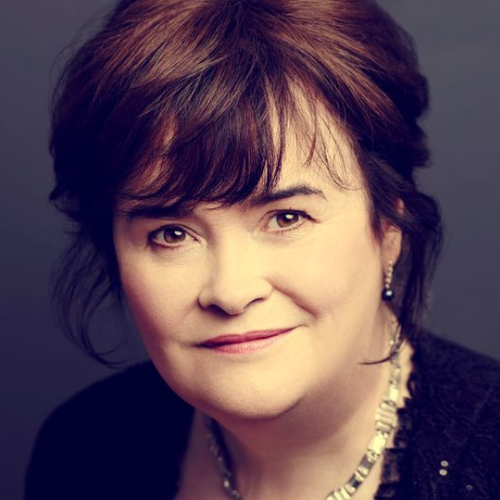Women & Neurodiversity
This years International Women’s Day is being celebrated on 8th March 2023. The key theme is “#EmbraceEquity”, putting emphasis on calling out discrimination, drawing attention to gender stereotypes and bias, and seeking out inclusion.
One particular area where gender equality falls short is in the awareness and diagnosis of neurodifferences in women.
But before we dive into why, let’s start by celebrating the success stories of inspirational women who are thriving with their diagnosis!
Susan Boyle - Autism
The Britain’s Got Talent singer was diagnosed with ‘brain damage’ as a child after complications at birth, and carried this label around for most of her life.
In 2012, she found out she was misdiagnosed and actually has high functioning autism. She said she always knew that brain damage was an unfair label, and feels relieved that she now has a clearer understanding of what is going on.
Simone Biles – ADHD
The Olympic gymnast was diagnosed with ADHD at a young age, and her diagnosis was revealed when her medical records were exposed in 2016. Biles took to Twitter to share that she was not ashamed of her condition, and has taken medication for it. At the Tokyo 2020 Olympics, she also opened up about becoming a mental health advocate and is championing the importance of protecting your mental wellbeing.
Jennifer Anniston – Dyslexia
‘Friends’ star Jennifer recalls that she always thought that she wasn’t smart and couldn’t retain information. She found out that she was dyslexic after she went to get a prescription for glasses in adulthood. She was asked to read a passage using blue and red tints, and a computer showed how her eyes jumped backwards and forwards across the text, leading her to become diagnosed with dyslexia.
Florence Welch – DCD (Dyspraxia)
The Florence and the Machine singer was diagnosed with DCD at a young age, and remembers being involved in special lessons, doing things like writing letters in sand. She believes her learning and motor skills issues have benefitted her career being in a creative industry and thinking about things differently, and she is a big supporter of events and charities for children with dyspraxia.
History of Neurodiversity in Women
Historically, women have often either been misdiagnosed, or have missed a diagnosis for neurodifferences such as Autism Spectrum Condition (ASC), Attention Deficit Hyperactivity Disorder (ADHD) and other specific neurodifferences such as Dyslexia, Dyscalculia and Developmental Coordination Disorder (DCD), formerly known as Dyspraxia.
Even now, research suggests that the Diagnostic and Statistical Manual of Mental Disorders (DSM-5), one of the main resources used to diagnose mental health challenges and neurodifferences, continues to have a gender bias. For example, it is thought that the ratio of boys:girls obtaining an ADHD diagnosis in childhood is around 9:1. It is also estimated that the most common age for women to be diagnosed with ADHD is between 30-40, compared to age 7 for boys.
This disparity can be seen across different neurodifferences, such as with ASC (for every woman diagnosed, it is thought that roughly 3 to 6 men are diagnosed). This imbalance still exists today, despite recent research suggesting that the prevalence in the population is actually much more equal across genders, demonstrating how much work there still is to be done to achieve equity.
So, why is this?
Misconceptions of how neurodifferences present across different genders still exist. For example, many women may not have identified with the term ‘ADHD’ throughout their lives if they had not experienced Hyperactivity in the way that it is usually perceived in this neurodifference. Instead of external symptoms, such as being disruptive in class or emotional outbursts, women are generally thought to internalise their hyperactivity more, which may look like being ‘spacey’ or preoccupied and emotional dysregulation. This presentation of hyperactivity in many women can often be overlooked as it can be much more subtle.
Additionally, there may be gender stereotypes at play. For example if a woman is seen to be excessively talkative, this could be easily overlooked due to differences in socialisation, such as girls being prone to ‘gossiping’.
Another major factor contributing to gender disparity in diagnosis is masking. Many women self-report wanting to hide or ‘mask’ their symptoms, out of fear or shame of being different and not wanting to draw attention to themselves.
Instead of focusing on the negatives of gender bias, let’s celebrate the success stories of inspirational women who are thriving with their diagnosis!
While steps are being taken to better the process of identifying and obtaining a diagnosis; highlighted by recent parliamentary debates on the unacceptable waiting times; there is still clearly a long way to go to achieve gender equity.
Outcomes for women must be improved, and early identification and diagnosis is imperative to this, with impacts on self-confidence, self-esteem and better mental well-being.
To achieve this, education and advocacy are vital. Here at Lexxic we offer awareness-raising webinars and workshops for teams and organisations as well as offering e-learning solutions to help everyone understand and be able to support neurodiversity in their workplace.





